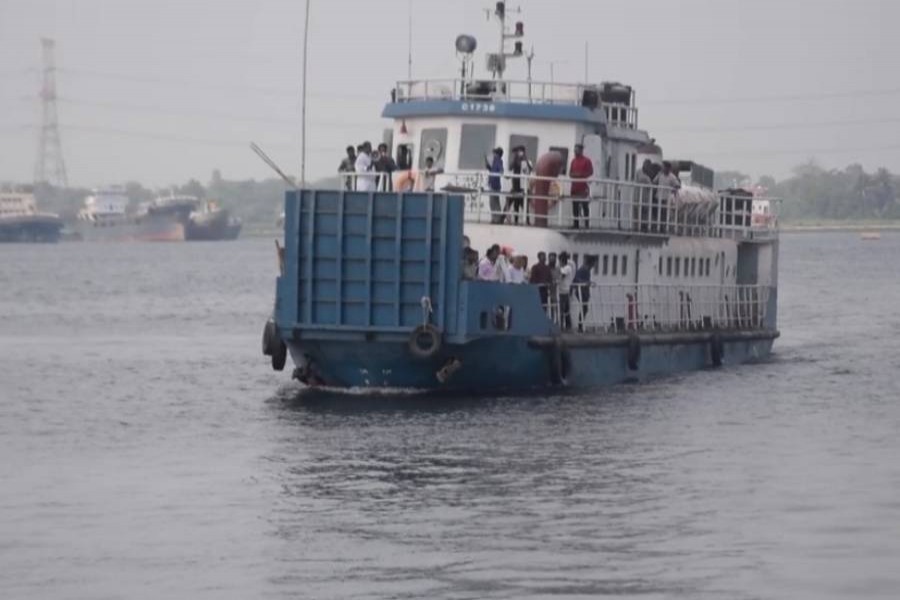
Published :
Updated :

The new look of the famed lake of Hatirjheel in Dhaka is spectacular. In the recent years, it continues to change its overall look unabatedly. The authorities' efforts to transform the lake from a foul-smelling stretch of water into a tempting venue for passing time warrant spontaneous plaudits. The residents of the capital no longer avoid walking along its banks. Instead, once at the spot, they seem to spend as much time as possible at the 'jheel'- or lakeside. There are dozens of novelties, by the present Dhaka standard, scattered across the sprawling venue. Starting from mobile snacks vans, several mid-size restaurants to open-air watch boxes or gossip corners encircled by railings, some jutting out into water, the attractions make it a leisure spot similar to those found in developed cities. After series of failed promises made by the operators, Hatirjheel could finally be transformed into an ideal spot for passing time.
The lake's all-out renovation accompanies a number of features. Since the days of its fresh start, the lake had provisions for short-distance cruises on its water by engine-run boats. As the lake is considerably long, the short trips on boats soon became a popular segment of timeout. Of late, these boat trips have begun turning into a much preferred means of shuttling between places. The boats offering this service are aptly called water taxis. Lately, hundreds of people are found utilising this service by moving between their home and their workplaces. These people reside in places quite far from each other. Availing this commuting facility, the city residents can travel to the main ferry point at Hatirjheel spending time quite shorter than that spent on bus-based road transport. Upon reaching the Hatirjheel point near Karwan Bazar, these commuters can manage travels to the other distant areas by public transport. They can somehow bear with the traffic jam which awaits them on roads. The solace, perhaps, is they could travel comfortably by boats from areas like Gulshan or Rampura. After extensive digging work, the lake flows through many populated areas. Like the people engaged in leisurely timeout, these commuters now consider the rejuvenated lake as a great blessing. The lake route has clearly shortened their commuting time. Apart from it, the travel has spared them the ordeal of remaining stuck in gridlocks or lengthy tailbacks on roads during rush hours.
The commuting along Hatirjheel routes reminds many of a frequently postponed project of introducing a circular waterway around Dhaka. Its routes were supposed to run along the four rivers surrounding the capital. The water transport chosen for the circular route were motor launches. To the dismay of the commuters willing to travel between Sadarghat and Ashulia in the first phase, the plan was dropped. After a gap of 4/5 years, it witnessed a resumption to be ditched again. The re-launch-postponement-re-launch had continued for nearly one-and-half decades. At long last, the wasteful exercise was almost dropped. The reason the grand project could not get off the ground was allegedly the 'exorbitantly high' launch fare fixed by the authorities. Moreover, drop in the rivers' water level, making the routes' navigability hazardous, had also been cited as a reason for the waterway project's falling flat. Except the Sadarghat and Ashulia stations, the midway suburban stoppages lacked terminal facilities. This deficiency had reportedly discouraged the elderly and women passengers from availing of this relatively slow but comfortable service.
Once put into effect permanently, the said waterway would have greatly relieved the Dhaka commuters of the hardship they were made to face on bus routes from Sadarghat to Mohammadpur, and further to Ashulia. The waterway was chiefly aimed at alleviating the problems of the Old Dhaka businesses. Carrying their voluminous goods by launches from northern Dhaka to the wholesales points on the Buriganga bank would have been easier for them. The travel time and freight charges would also have seen a remarkable cut. The four rivers earmarked for the Dhaka circular waterway included the Buriganga, the Turag, the Balu and a segment of the Shitalakkhya. It meant Dhaka could connect with Narayanganj and Munshisanj on emergencies by using the circular waterway. The failure to implement the project has blatantly deprived the greater Dhaka residents of a ready-to-use connectivity mode. The city of Dhaka is fortunate enough to be blessed with four rivers flowing through it and on its peripheries. Few cities in Asia can boast of such a gift of nature.
There are controversies about the origin of the Hatirjheel Lake. A section of Dhaka historians maintain that the natural lake was once the part of a large wetland. The sprawling area also comprised a dying river linked to the Balu. The low-lying lake may have branched out from the now-extinct river flow. A segment of Dhaka specialists believes the lake's past dates back to the times when it was part of the remains of another river. The river extended up to Karwan Bazar. However, the pleasant truth is after the wetland's extensive renovation the lake's past glory and the prospects began coming to the fore.
Had the lake not been dug deep and extended, the unique waterway through it would have remained a pipedream for the visionary city planners.The suspension of circular waterway service must have saddened many who had pinned hopes on it. It was a lack of initiatives on the part of the authorities that led to the repeated postponements of the operation of the service. Given the authorities' half-hearted stance, private water transport operators could be given the responsibility to run Dhaka's undervalued circular waterway.


 For all latest news, follow The Financial Express Google News channel.
For all latest news, follow The Financial Express Google News channel.